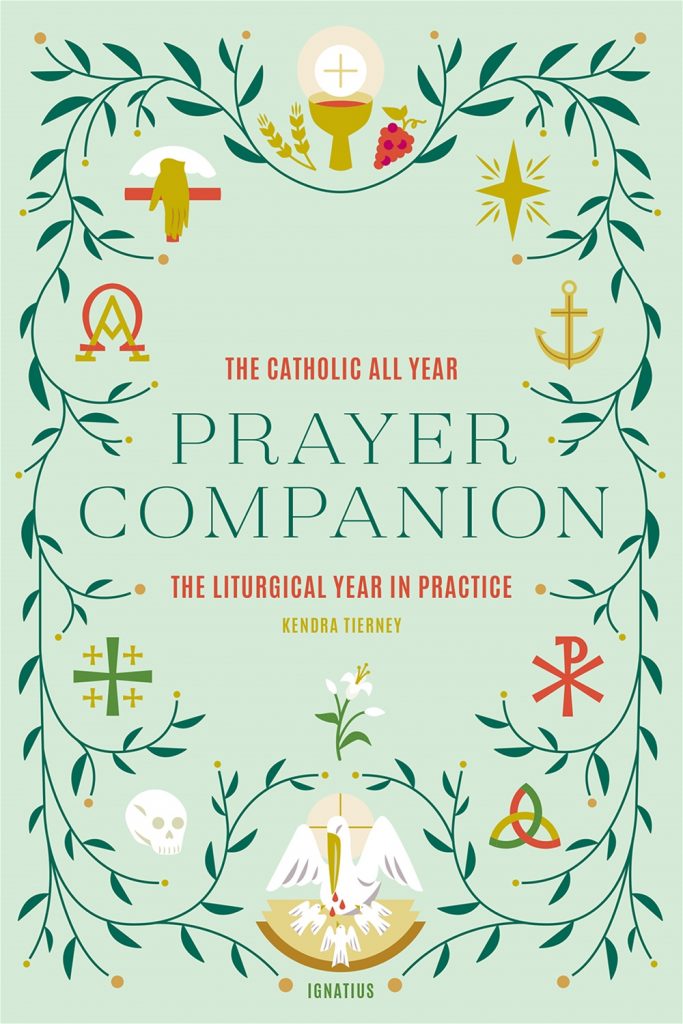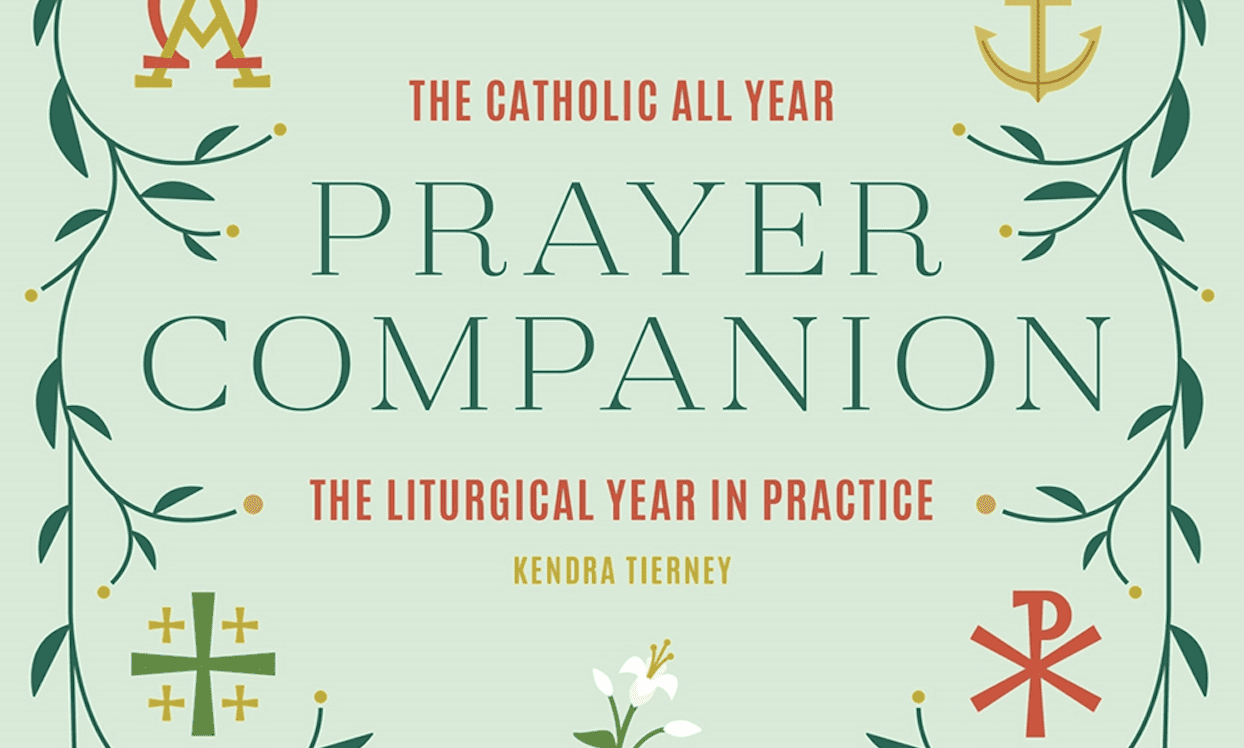The Catholic All Year Prayer Companion by Kendra Tierney. San Francisco: Ignatius Press, 2021. 400 pp. ISBN: 978-1621644255. $19.25 paperback.
Kendra Tierney delivers another excellent resource for the domestic church with a book of devotions and prayers to deepen the family’s connection to the liturgical year. As a companion book to her Catholic All Year Compendium, Tierney describes the Prayer Companion as a collection of “Bible passages, prayers, songs, and devotions” that her family uses throughout the year to root itself more deeply to the rhythms of the Church’s prayer. The traditions and stories behind these various prayers are found in the Compendium, while this book contains over 300 pages of prayer texts for the various days and seasons in the Church’s life.
Civilization of Love
Popular piety and devotion are an immense source of richness for the Christian life. This “living reality in and of the Church”[1] is undergoing a revitalization and rediscovery in the domestic church. “Its source is the constant presence of the Spirit of God in the ecclesial community; the mystery of Christ Our Savior is its reference point, the glory of God and the salvation of man its object, its historical moment ‘the joyous encounter of the work of evangelization and culture.’”[2] The Magisterium values and encourages the incorporation of various devotions and pious exercises in the Christian life because of their “innate sense of the sacred and the transcendent,” as popular piety “manifests a genuine thirst for God.”[3] The value of family prayer is often repeated in the familiar phrase, “the family that prays together stays together.” The domestic church, as an image of the Universal Church, is the first teacher of prayer for its members, building them into a “civilization of love.” Pope John Paul II wrote in his Letter to Families that prayer “by the family, for the family, and with the family” is capable of increasing “the strength and spiritual unity of the family, helping the family to partake of God’s own strength.”[4]

Kendra Tierney’s Prayer Companion opens with a section on the domestic church in practice. As she rightly points out, the hectic activity of family life never really calms down, so, often the focus on family prayer is easy to put aside or kicked further down the road. The centrality of prayer in family life can easily be forgotten, or at least undervalued, with all of the other things that need to get done. Tierney gives encouragement simply to begin rather than waiting for the right time or the perfect prayer to come along. She encourages the family to take up the practice of liturgical living to address the urgency of family prayer with short and specific devotions or vocal prayers for each day. The term “liturgical living” is used to describe a daily habit of devotional prayer that is centered around the liturgical calendar. This includes meal prayers, litanies, and novenas, but also other elements of home life with children such as crafts, recipes, and song.
The prayer texts in the Companion include collects from the Roman Missal, excerpts from the scriptures of the day, and other devotions associated with each saint or season. Other texts come from the Collectio Rituum, the Manual for Indulgences, and Catholic Household Blessings and Prayers, all reprinted with permission from the publishers. With this variety, the interwoven temporal and sanctoral cycles are both incorporated into the prayer of the home. Rightly so, Holy Week takes up a large section in the center of the book. Good Friday contains the Passion according to St. John, and Holy Saturday features the complete text of the Exsultet. Tierney includes prayers for each of the liturgical seasons, and for specific days on the calendar: solemnities, feasts, and memorials, as well as some days designated as “historical” which are not included on the universal calendar but are nonetheless noteworthy because of their traditions, such as the observance of “Saints Adam and Eve” on December 24. Each chapter covers one month, and the appendices include prayers appropriate to daily use or special occasions, such as the prayers of the Rosary, prayers for work or study, and special times of life.
Blessings for Liturgical Living
Chief among the sacramentals incorporated into liturgical living are blessings. Tierney offers a quick primer on who can bless and why, and explains the difference between constitutive and invocative blessings. As this book is intended for use by the layperson, it is important for the reader to understand the context in which he or she may invoke God’s blessings. She outlines the theological understanding of authority: “All rightful authority begins with God, and Jesus Christ himself is the founder and head of the Catholic Church.”[5] This authority, passed on through the apostles, is exercised by the Pope, the bishops, pastors, and the heads of families, according to their own office within the Church.
In the home, the head of the family (often the father) has the authority to ask for God’s blessings on the things within the sphere of domestic life: the food, home, and people for whom he is responsible. While he cannot create a sacramental, and it is preferable that a priest bless certain objects even within the home, it is possible for him to ask God’s blessing. Tierney makes careful note of the details here, as well as the indication of gestures (i.e., a layperson does not make the sign of the cross in the air over an object or person). Parents or godparents can always bless their children and godchildren, and trace the sign of the cross on their forehead. This is a beautiful gesture that can be incorporated into a family’s night prayer before bed.
Mary, Litanies, and More
Also included in the Prayer Companion are a few other prayer types that are described for those new to liturgical living. Approved litanies, the criteria for indulgences, novenas, and consecrations are all included to broaden the depth of this resource. The emphasis Tierney places on the family Rosary is encouraging: she describes the frequent difficulty of praying an entire Rosary with the family, but also the beautiful results. It is a most powerful weapon, and she makes good use of the appendix to include the mysteries and prayers for the reader.
Devotion to Mary is highly encouraged by the Church, who calls the Rosary “one of the most excellent prayers to the Mother of God” because of its spiritual value and efficacy. “The Church exhorts all the faithful—sacred minister, religious and laity—to develop a personal and community devotion to the Blessed Virgin Mary through the use of approved and recommended pious exercises.”[6]
In addition to the Rosary, the Companion includes other devotions and consecrations. It also includes some prayers in both Latin and in their English translation. Quoting from both St. John Paul II and Pope Benedict XVI, Tierney prompts the reader to see the value in handing on the more common prayers in Latin. In fact, the faithful are encouraged to learn the more common prayers in the language of the Church. Among these are the seasonal Marian Antiphons and hymns like the Stabat Mater. Tierney’s advice to the reader is that “different devotions will appeal to people of different temperaments or in different circumstances,” and she encourages the reader to explore. The devotional life, as more individual and personal, is open to different expressions of prayer and pious exercises, flowing from and leading to that great celebration of the one Church in the Liturgy.
Liturgy of the Hours
With all of these excellent connections, the prayers contained in this Companion are beautiful and strengthen the family’s connection to the Holy Sacrifice of the Mass. There is, however, one important omission: the encouragement to participate in the Liturgy of the Hours. While Tierney emphasizes liturgical living and makes so many connections to the liturgy in the choices of prayers that flow from and lead to the Mass, she misses this crucial point.
The Divine Office is one way in which the family can fully enter into the liturgy of the Church within the home, and it can be done every day. While this is not the focus of the book, any book on liturgical living should mention this important liturgical prayer. The Liturgy of the Hours is how the Church “prays without ceasing,” seven times throughout the day and night. It is the singular way the family can actually participate in the “eternal love song of Christ to the Father” from the home. Perhaps this omission is due to the daunting task ahead of the average Catholic who has not been exposed to the Liturgy of the Hours: the layout of the four-volume set of the breviary, keeping track of which week of the four-week psalter, using the various ribbons, and the challenge of how to approach different memorials can involve a steep learning curve.
I would argue that it is worth it for the laity to take up this prayer of the whole Church! Children can easily learn to participate in Compline. A welcome addition would be a chapter, or even a paragraph, dedicated to introducing her readers to the single-volume books such as Christian Prayer or the many online resources that are available (as she does for recordings of various songs and chants). For those that prefer the permanence and solidity of a dignified book, and who are interested in trying their hand at some chanting, I would recommend a resource like the Mundelein Psalter. In our home, we have an eight-book set for when we have dinner guests, and, yes, we’ll ask you to sing for your supper!
The Domestic Church and the Liturgical Year
Within the scope of discipleship and the devotional life of the Christian, this collection serves as a wonderful compilation of prayers from several sources. It is effective in its presentation of short, easy to use prayers, accessible to the family wishing to deepen its connection to the liturgical year. Even though its primary use is devotional, it is also a valuable teaching tool appropriate to the Ecclesia domestica: “a community of grace and prayer, a school of human virtues and of Christian charity.” The Prayer Companion makes a home for itself on the bookshelf next to the United States Conference of Catholic Bishops’ Catholic Household Blessings and Prayers, near the dining room table, ready to be incorporated into our liturgical living, and directing us towards that “summit toward which the activity of the Church is directed…and the fount from which all her power flows.”[7]
Notes:


